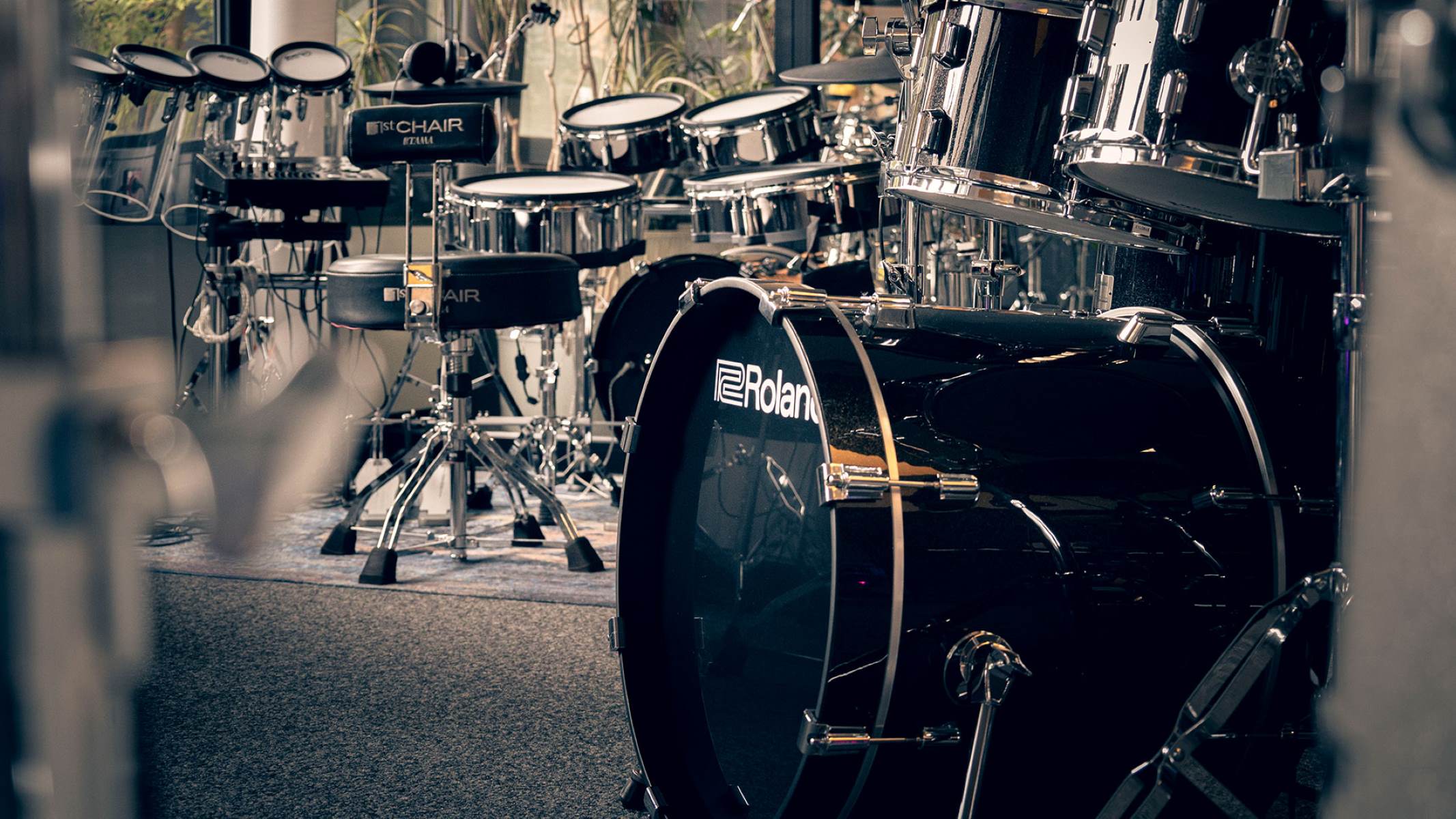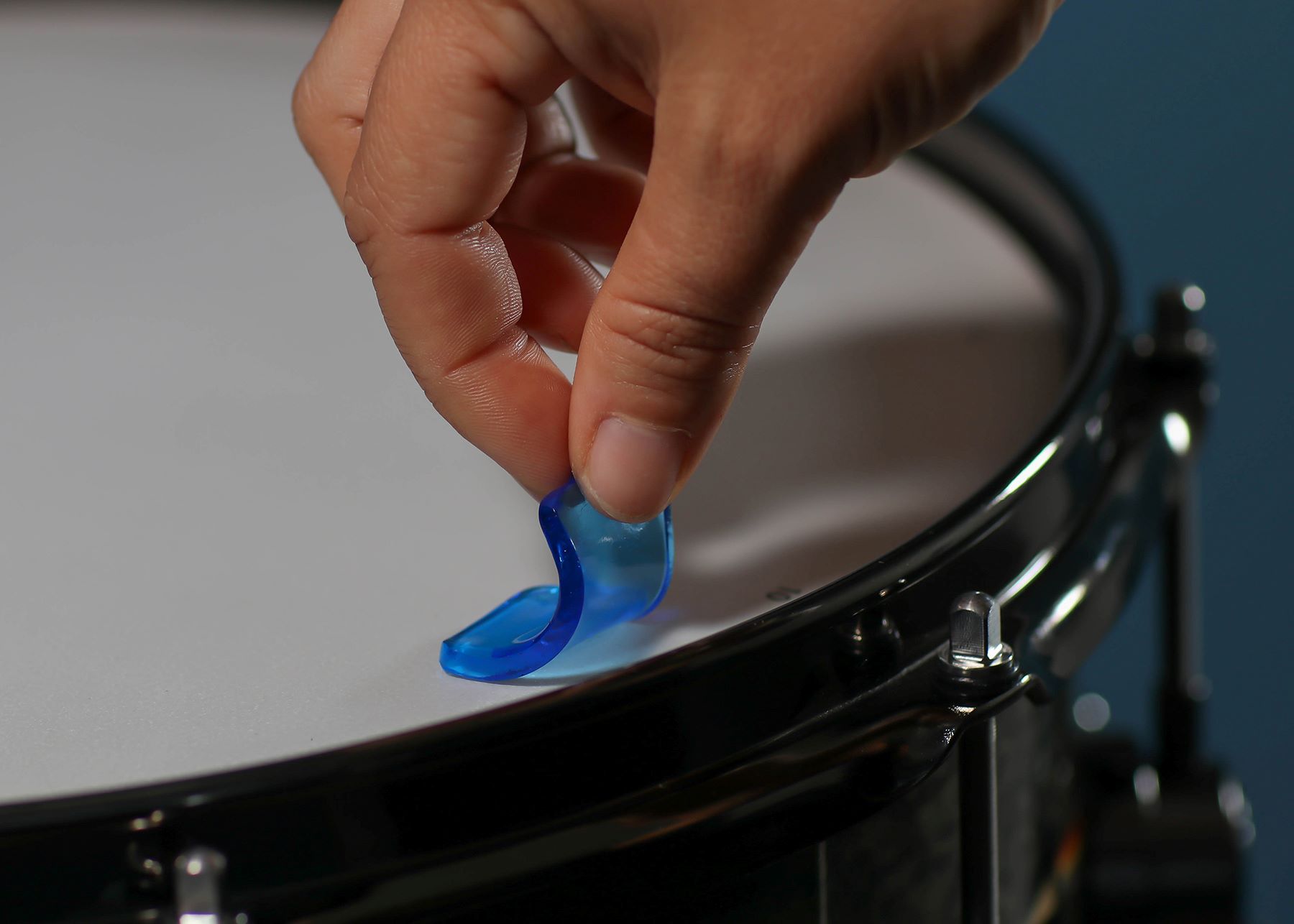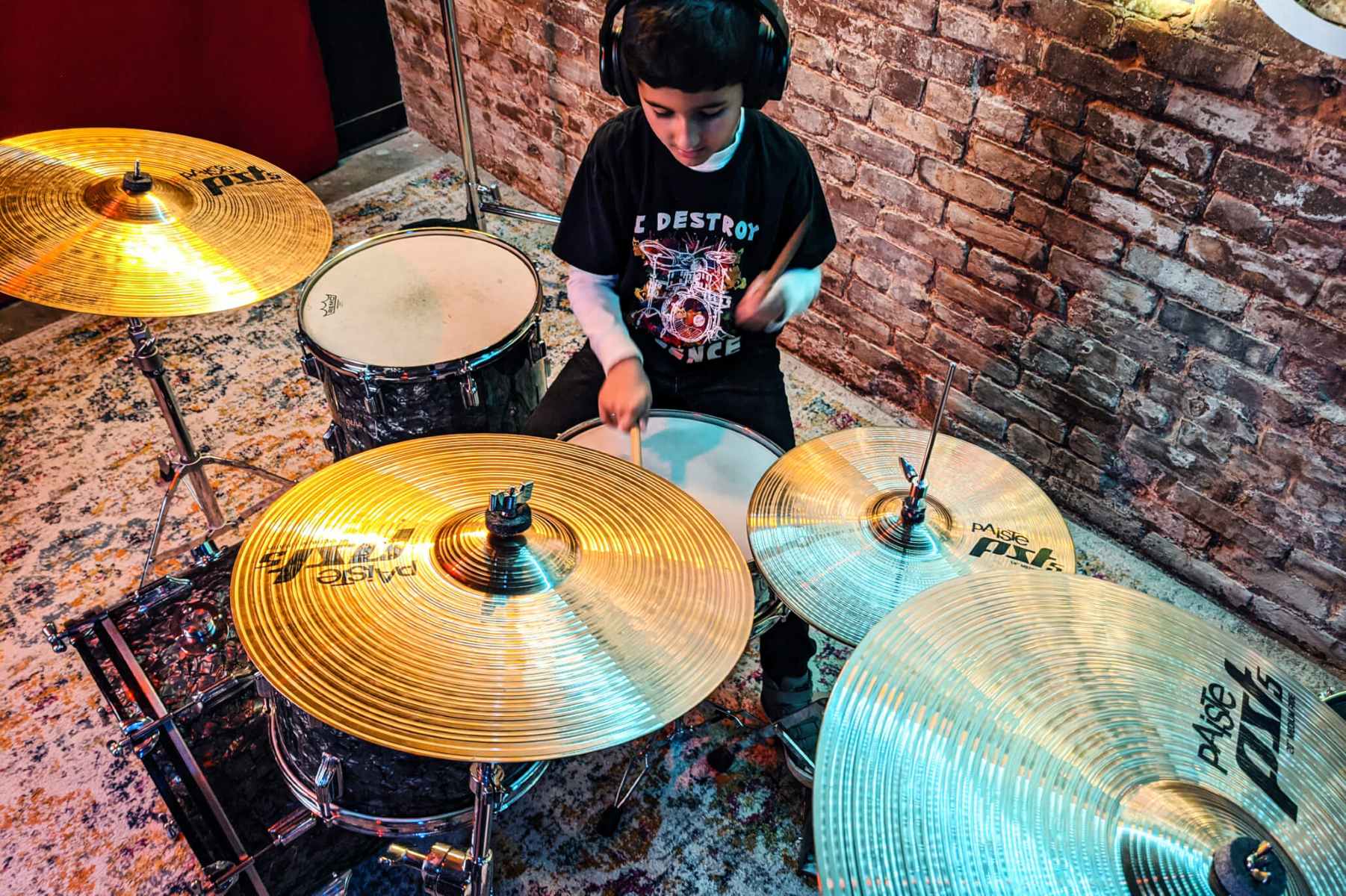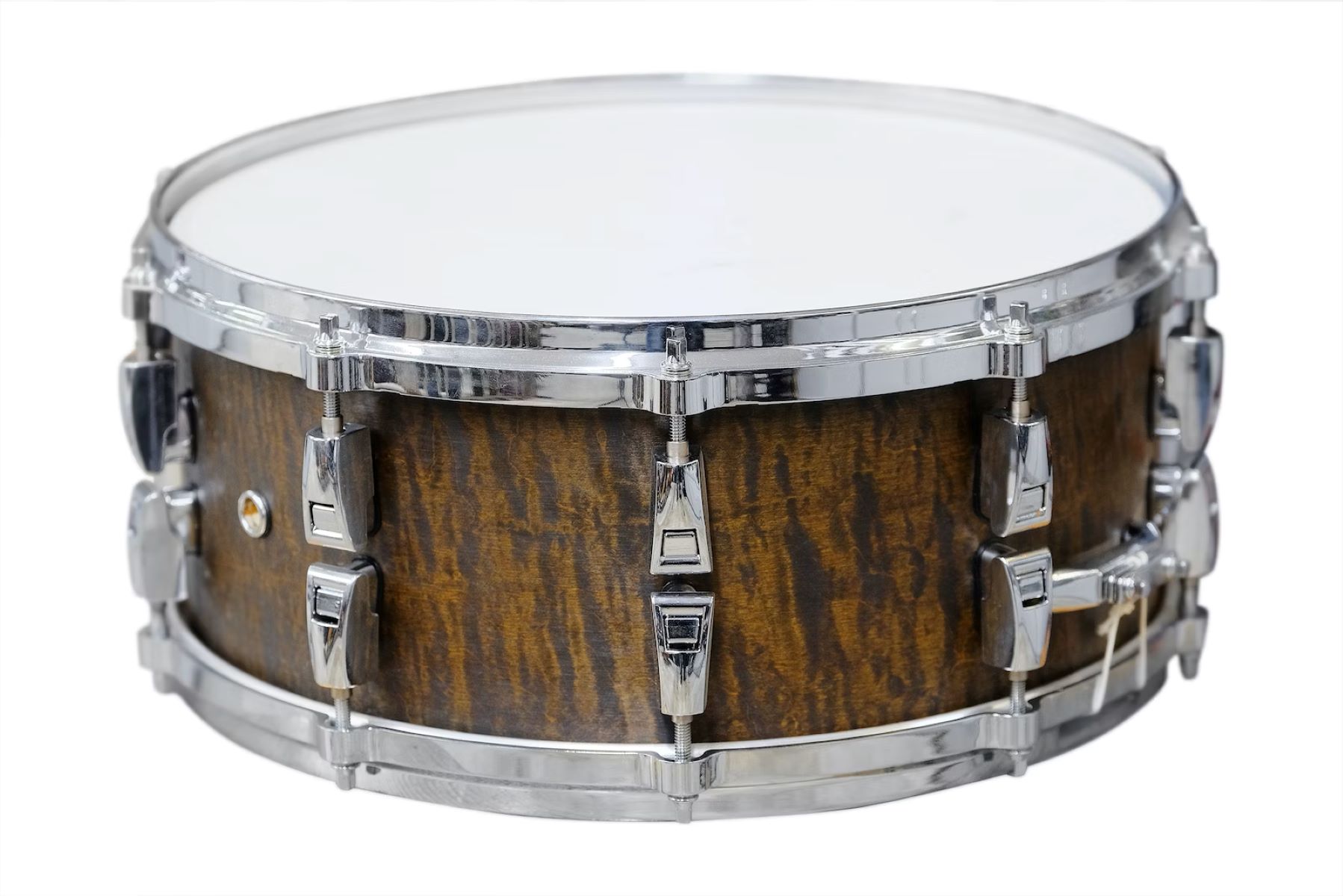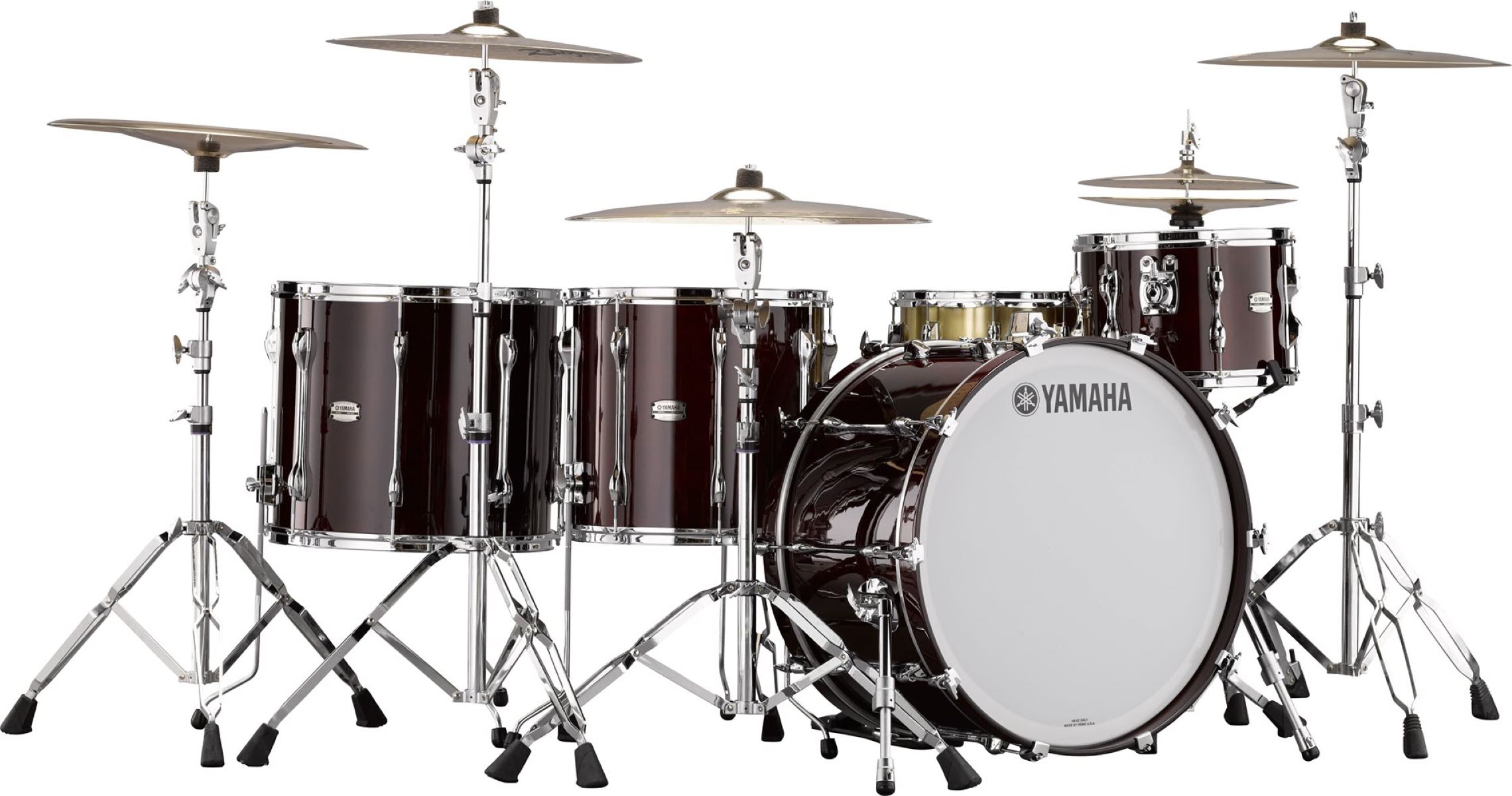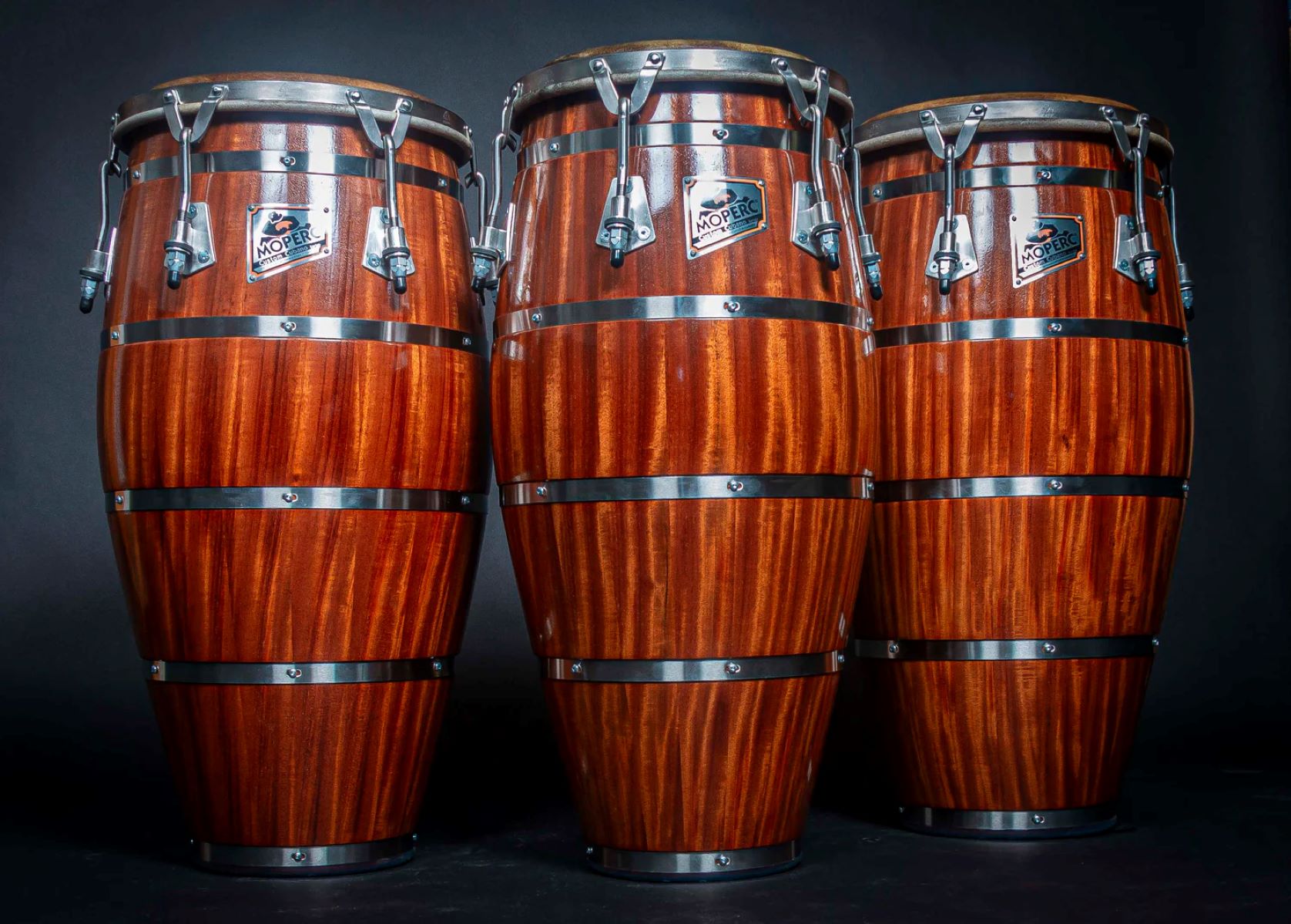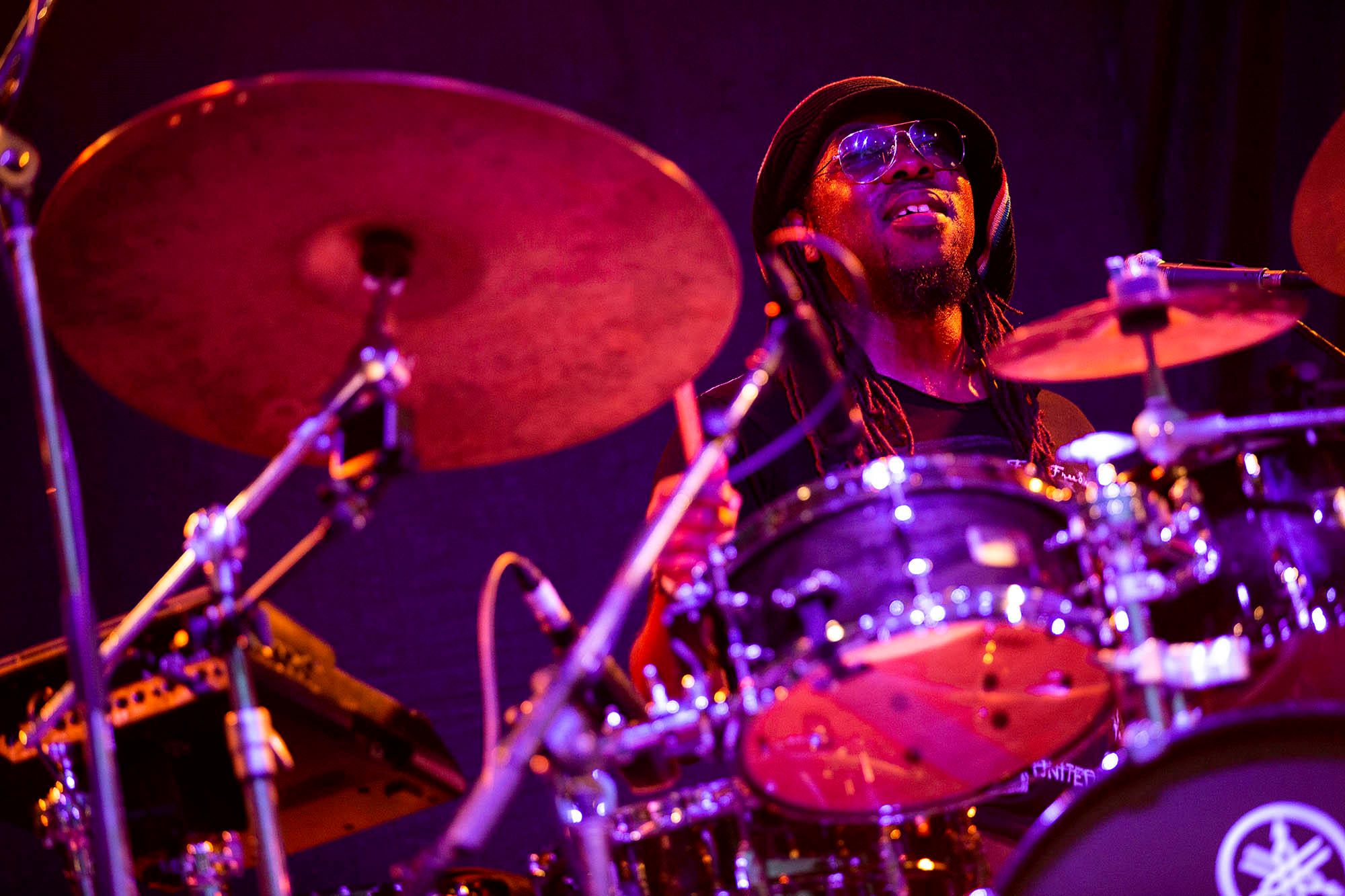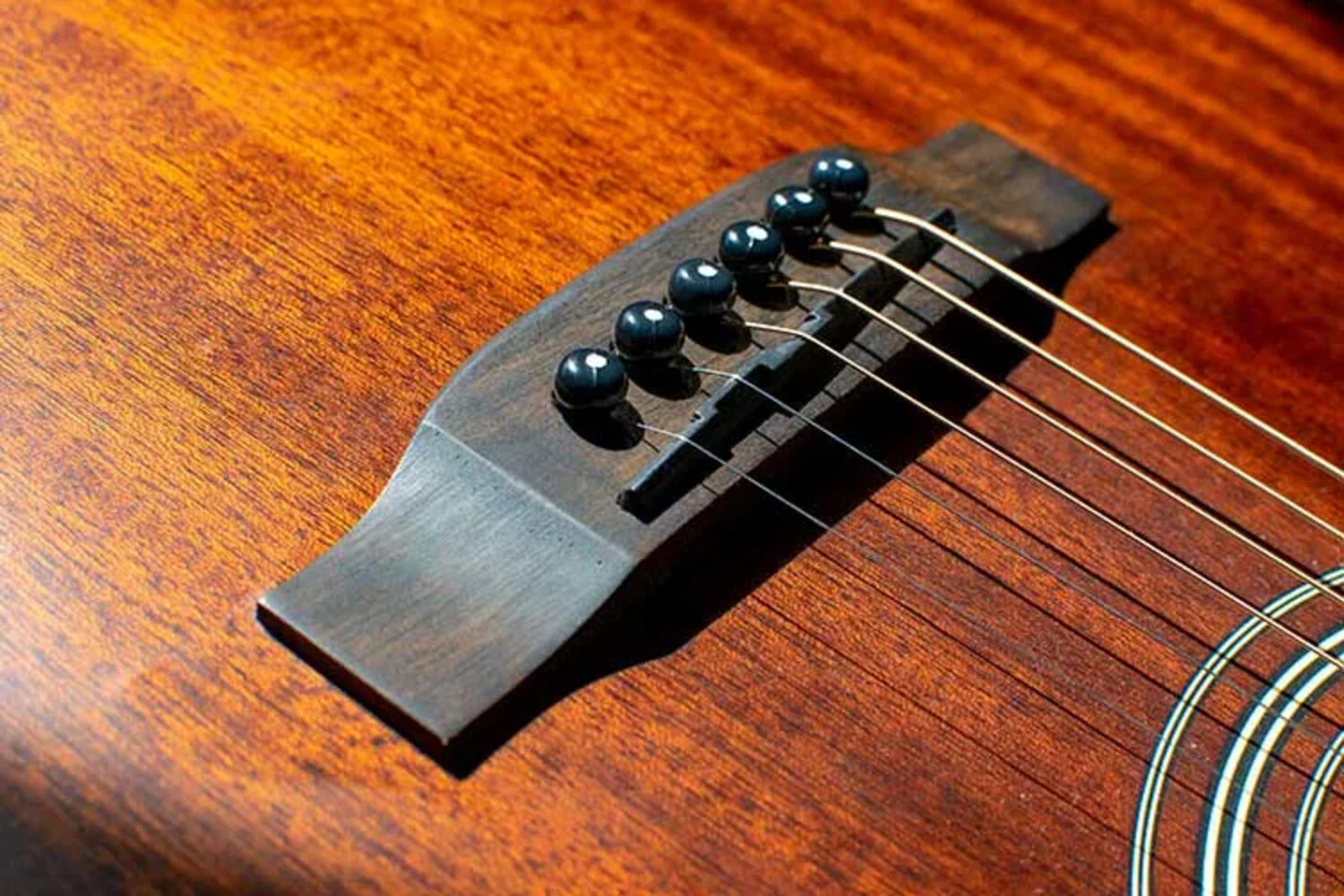Home>Instruments>Drums>What Is Harder: Drums Or Guitar


Drums
What Is Harder: Drums Or Guitar
Published: February 7, 2024
Discover the challenges of learning drums and compare them to mastering the guitar. Explore which instrument is more difficult and find tips for overcoming the unique obstacles of drumming.
(Many of the links in this article redirect to a specific reviewed product. Your purchase of these products through affiliate links helps to generate commission for AudioLover.com, at no extra cost. Learn more)
Table of Contents
The Musical Dilemma: Drums vs. Guitar
The age-old debate of drums versus guitar has sparked countless discussions among music enthusiasts. Both instruments are essential components of a band, each offering unique challenges and rewards. Aspiring musicians often find themselves pondering which instrument to pursue, considering factors such as physical demands, technical intricacies, and the emotional connection to the music. In this article, we will delve into the contrasting aspects of playing drums and guitar, shedding light on the physical, technical, and emotional dimensions of each instrument.
While the drums drive the rhythm and provide the backbone of a song, the guitar assumes a versatile role, delivering melodies, harmonies, and intricate solos. The physical demands, technical challenges, and emotional experiences associated with each instrument contribute to the ongoing discourse regarding which is more challenging to master. By exploring these facets, we can gain a deeper understanding of the complexities and joys inherent in both drumming and guitar playing, ultimately appreciating the unique artistry and craftsmanship required for each instrument. So, let's embark on a journey to unravel the intricacies of drumming and guitar playing, and perhaps gain insight into the eternal question: What is harder, drums or guitar?
The Physical Demands of Playing Drums
Playing the drums is a physically demanding endeavor that requires a high level of coordination, agility, and stamina. Drummers engage multiple muscle groups simultaneously, utilizing their arms, legs, and core to produce intricate rhythms and dynamic beats. The act of striking various drum components, such as the snare, hi-hat, and cymbals, demands precise motor skills and dexterity. Furthermore, maintaining a consistent tempo and executing complex drum fills necessitate a strong sense of timing and physical endurance.
Drummers often find themselves immersed in a whirlwind of movement, as they coordinate their limbs to produce a cohesive and compelling rhythm. The footwork involved in operating the bass drum and hi-hat pedal adds another layer of complexity, requiring adeptness in independent coordination. Additionally, the physical exertion of playing energetic drum patterns during live performances can be likened to a cardiovascular workout, as drummers exert themselves to propel the music forward with unwavering intensity.
Furthermore, the physical setup of the drum kit itself presents a unique challenge. Drummers must customize their setup to accommodate their individual playing style, ensuring optimal reach and comfort while maneuvering around the kit. This customization process involves adjusting drum heights, angles, and distances to facilitate seamless transitions between different components, all while maintaining a balanced posture to prevent strain and fatigue.
In essence, the physical demands of playing drums encompass a holistic approach to movement and endurance, requiring musicians to finely tune their motor skills, coordination, and physical fitness. The physicality of drumming not only contributes to the captivating spectacle of a live performance but also underscores the rigorous athleticism and precision essential to mastering this percussive art form.
The Technical Challenges of Playing Guitar
Mastering the guitar entails a myriad of technical challenges that demand unwavering dedication and precision. From fretting chords and executing intricate fingerpicking patterns to navigating scales and improvising solos, guitarists embark on a journey rife with technical intricacies. The instrument’s fretboard houses a vast array of notes, chords, and scales, presenting a labyrinth of possibilities that require meticulous study and practice to navigate proficiently.
One of the fundamental challenges faced by guitarists is developing the dexterity and muscle memory necessary to maneuver across the fretboard with agility and accuracy. Fretting chords and executing complex chord transitions demand precise finger placement and coordination, often necessitating the development of calluses to withstand the pressure exerted on the fingertips.
Furthermore, the art of soloing and improvisation adds another layer of technical complexity to guitar playing. Guitarists must familiarize themselves with scales, modes, and arpeggios, honing their ability to craft melodic phrases and captivating solos that resonate with emotion and technical prowess. This entails not only a deep understanding of music theory but also the ability to translate theoretical knowledge into expressive and compelling musical performances.
The incorporation of various guitar techniques, such as bending, sliding, hammer-ons, and pull-offs, further amplifies the technical demands placed on guitarists. These techniques imbue the music with nuance and expressiveness, but mastering them requires meticulous attention to detail and a keen ear for tone and articulation.
Moreover, the technical aspect of guitar playing extends to the realm of tone production and sound manipulation. Guitarists delve into the intricacies of amplification, effects pedals, and tone shaping, seeking to sculpt their sonic signature and achieve the desired timbre and texture for their musical expression.
In essence, the technical challenges of playing guitar encompass a multifaceted journey of skill development, encompassing fretboard navigation, chord mastery, soloing proficiency, and sonic exploration. The pursuit of technical excellence on the guitar demands a harmonious blend of discipline, creativity, and technical acumen, underscoring the instrument’s allure as a versatile and expressive musical vehicle.
The Mental and Emotional Aspects of Playing Drums
Beyond the physical demands, playing the drums entails a profound connection to the music, encompassing mental acuity and emotional expression. Drummers serve as the rhythmic architects of a song, shaping its dynamics and infusing it with pulsating energy. The mental fortitude required to maintain a steady tempo, execute dynamic fills, and synchronize with fellow musicians is a hallmark of drumming.
Drummers immerse themselves in the intricacies of rhythm, cultivating a deep sense of timing and pulse that underpins the musical tapestry. This demands unwavering focus and mental agility, as drummers navigate complex rhythmic patterns and syncopated grooves, anchoring the music with precision and finesse.
Moreover, the emotional dimension of drumming transcends the technical aspects, as drummers channel their innermost feelings into their playing. The act of striking the drums becomes a cathartic release, allowing musicians to convey a spectrum of emotions through their dynamic range and expressive nuances. Whether propelling a driving rock beat or crafting subtle jazz inflections, drummers infuse the music with their emotional imprint, serving as the heartbeat of the ensemble.
Furthermore, the collaborative nature of drumming fosters a deep sense of camaraderie and unity among musicians. Drummers forge a symbiotic relationship with their bandmates, establishing a musical dialogue that hinges on mutual trust and cohesion. This interconnectedness cultivates a profound sense of fulfillment and emotional resonance, as drummers contribute to a collective sonic vision while responding to the musical cues and gestures of their fellow performers.
Additionally, the mental and emotional aspects of drumming extend to the realm of improvisation and creative expression. Drummers embrace spontaneity and intuition, weaving intricate rhythmic patterns and embellishments that reflect their artistic sensibilities. This process of musical exploration engenders a sense of liberation and exhilaration, as drummers venture into uncharted rhythmic territories, guided by their instincts and emotional impulses.
In essence, the mental and emotional aspects of playing drums encapsulate a rich tapestry of focus, expression, collaboration, and artistic freedom. Drummers navigate a landscape of rhythmic intricacies while infusing the music with their emotional essence, embodying the vital role of rhythm in shaping the emotional narrative of a musical performance.
The Mental and Emotional Aspects of Playing Guitar
Playing the guitar encompasses a profound journey of mental acuity and emotional expression, intertwining technical proficiency with introspective artistry. Guitarists embark on a multifaceted exploration of melody, harmony, and sonic texture, delving into the depths of musical expression while navigating the intricacies of the instrument.
The mental dimension of guitar playing manifests in the form of focused concentration and cognitive agility. Guitarists engage in intricate fretboard navigation, chord progressions, and scale patterns, requiring meticulous attention to detail and a sharp cognitive acumen. The ability to internalize musical structures, decipher notation, and interpret chord voicings demands a keen musical intellect and an insatiable thirst for knowledge.
Moreover, the emotional resonance of guitar playing transcends technical proficiency, as guitarists infuse their playing with a spectrum of feelings and sentiments. The act of coaxing emotive melodies and soul-stirring harmonies from the strings becomes a conduit for personal expression, allowing musicians to articulate their innermost emotions through the language of music. Whether conveying poignant melancholy through a delicate fingerstyle passage or igniting fervent passion with a searing guitar solo, guitarists imbue their playing with a profound emotional narrative.
Furthermore, the collaborative nature of guitar playing cultivates a sense of musical camaraderie and emotional connection. Guitarists partake in harmonious interplay with fellow musicians, engaging in musical dialogues that foster a collective sense of creativity and shared emotional resonance. This collaborative synergy amplifies the emotional depth of the music, as guitarists harmonize their expressions with the collective vision of the ensemble.
Additionally, the act of improvisation and creative exploration embodies the emotional and mental facets of guitar playing. Guitarists venture into the realm of spontaneous musical expression, embracing intuition and inventive flair to craft evocative solos and improvisational passages. This process of musical discovery engenders a sense of liberation and emotional fulfillment, as guitarists navigate uncharted sonic landscapes guided by their instincts and artistic impulses.
In essence, the mental and emotional aspects of playing guitar encapsulate a profound synthesis of technical prowess, introspective expression, collaborative synergy, and creative freedom. Guitarists navigate a rich tapestry of musical intricacies while infusing their playing with a deeply resonant emotional palette, epitomizing the profound connection between the mind, heart, and music.
Exploring the Musical Dichotomy
As we traverse the contrasting realms of drumming and guitar playing, we unearth a rich tapestry of physical demands, technical intricacies, and emotional resonance that define the essence of each instrument. The rhythmic dynamism of drumming intertwines with the melodic expressiveness of guitar playing, offering distinct yet equally compelling pathways for musical expression.
Drummers navigate a terrain of physicality and coordination, harnessing their rhythmic prowess to propel the music forward with unwavering intensity. The act of striking the drums becomes a visceral release, channeling a spectrum of emotions through dynamic beats and expressive fills. The mental fortitude and collaborative synergy inherent in drumming underscore its role as the heartbeat of the ensemble, shaping the emotional narrative of a musical performance.
Conversely, guitarists embark on a journey of technical mastery and emotional resonance, navigating the intricacies of fretboard navigation, chord voicings, and sonic exploration. The guitar becomes a conduit for introspective artistry, allowing musicians to articulate their innermost emotions through evocative melodies and soul-stirring harmonies. The collaborative interplay and creative freedom inherent in guitar playing amplify its emotional depth, fostering a profound sense of musical camaraderie and collective creativity.
Ultimately, the eternal question of which instrument is harder, drums or guitar, transcends a mere comparison of technical difficulty. Both instruments offer unique challenges and rewards, each demanding a harmonious blend of physical prowess, technical acumen, and emotional depth. The physical demands of drumming intertwine with the mental and emotional dimensions of guitar playing, forming a complementary dichotomy that enriches the musical landscape.
As musicians continue to embark on their respective musical journeys, whether behind the drum kit or wielding a guitar, they embody the enduring spirit of artistic exploration and creative expression. The rhythmic pulse of the drums converges with the melodic resonance of the guitar, weaving a tapestry of musical diversity and collective passion. In the end, the pursuit of musical excellence transcends the dichotomy of drums versus guitar, uniting musicians in a shared pursuit of artistic fulfillment and sonic innovation.

